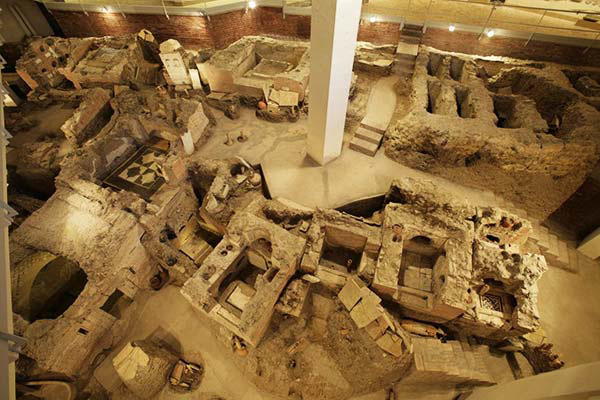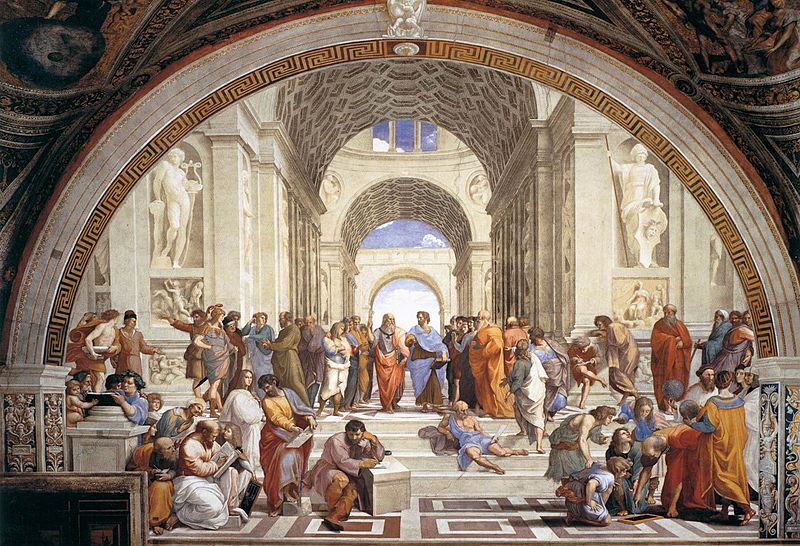Julius Caesar

Gaius Julius Caesar (July 12, 100 BC - March 15, 44 BC) was a Roman military and political leader. He played an important part in the transformation of the Roman Republic into the Roman Empire.
He is widely considered to be one of the greatest military geniuses of all time, as well as a brilliant politician and one of the ancient world's strongest leaders. He was proclaimed dictator for life, and he heavily centralized the government of the Republic.
He was assassinated on the Ides of March in 44 BC. Caesar's military campaigns are known in detail from his own written Commentaries (Commentarii), and many details of his life are recorded by later historians.
Augustus
Emperor Augustus of Rome was born with the name Gaius Octavius on September 23, 63 B.C. He took the name Gaius Julius Caesar Octavianus (Octavian) in 44 B.C. after the murder of his great uncle, Julius Caesar. In his will Caesar had adopted Octavian and made him his heir.
Octavian was a shrewd, brilliant and astute politician. He was able to achieve a great power in Rome. At the time of Caesar's assassination, Octavian held no official position.
Only after he marched on Rome and forced the senate to name him consul, was he established as a power to be reckoned with.
Rome achieved great glory under Augustus. He restored peace after 100 years of civil war; maintained an honest government and a sound currency system; extended the highway system connecting Rome with its far-flung empire; developed an efficient postal service; fostered free trade among the provinces; and built many bridges, aqueducts and buildings adorned with beautiful works of art created in the classical style.
Literature flourished with writers including Virgil, Horace, Ovid, and Livy all living under the emperor's patronage. The empire expanded under Augustus with his generals subduing Spain, Gaul (now France), Panonia and Dalmatia (now parts of Hungary and Croatia). He annexed Egypt and most of southwestern Europe up to the Danube River. After his death, the people the Roman Empire worshipped Augustus as a god.
Virgilio
 Publius Vergilius Maro was born in 70 BC in Mantua, a city of the Roman Empire. He died in 19 BC in Rome. He was the writer of the epic poem, The Aeneid.
Publius Vergilius Maro was born in 70 BC in Mantua, a city of the Roman Empire. He died in 19 BC in Rome. He was the writer of the epic poem, The Aeneid.
Virgil spent his entire life as a poet. He was born into the Roman world the son of a patrician family, and educated as such a son of such class was. His talents caught the sight of the Roman emperor Caeser Augustus who commissioned him to create an epic poem about the glory of the Roman Empire that would rival the great works of Homer.
Before his death, he requested that his manuscript for the Aeneid be destroyed. Fortunately, the emporer saw otherwise.
Raphael Sanzio
 Born Raffaelo Santi or Sanzio, 1483-1520
Born Raffaelo Santi or Sanzio, 1483-1520 Raphael was an outstanding master of Italian High Renaissance art. Working chiefly as a painter and occasionally as an architect, he synthesized classicism, idealization, and naturalism to create a consummate Renaissance style.
Born in Urbino, from 1504 to 1508 Raphael lived in Florence; this experience would prove decisive in the maturation of his career, as exposure to the art of Leonardo and Michelangelo led him to develop a grandiose, powerful approach. In 1508 Raphael moved to Rome, where he would spend the rest of his life. Like Michelangelo, he was employed in redecorating the papal apartments in the Vatican.
After this wonderful work he was inundated with commissions, both public and private, from the highest levels of Roman society. He was commissioned by Pope Leo X to design a set of nine tapestries to decorate the Sistine Chapel.
Raphael also worked as an architect. He designed two chapels for Agostino Chigi, an influential Roman banker, between 1512 and 1516. This new role allowed him to determine how his art was experienced.
Raphael's last major work was still incomplete at his death. The Transfiguration (Rome, Vatican, 1518-20), a huge altarpiece commissioned by the Medici, took the static, iconic altarpiece formula of Renaissance art and converted it into dynamic narrative.
Until the nineteenth century Raphael's works served as the paradigm of great art for western civilization.





